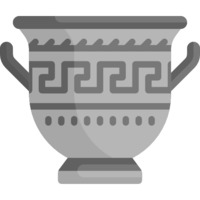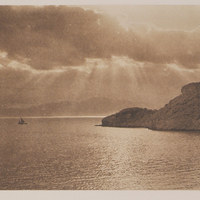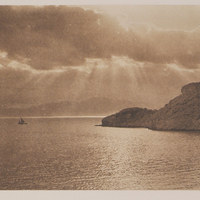Σούγια
Αντικείμενο
Τίτλος Σημείου Ενδιαφέροντος
el
Σούγια
en
Sougia
Περιγραφή / Απόσπασμα
134-138
en
It is singular that the well-known cock of the woods of northern Europe, distinguished by the name of capercailzie, in Scotland, where the species has become extinct only within the last fifty years, should have been in so low a latitude as Crete. The fact, however, is record by Belon, in a manner which seems to leave no doubt o the subject.
Παρατηρήσεις
el
Εξαιτίας της κακής κατάστασης του δρόμου, ο Pashley δυσκολεύεται να ιππέυσει και αποφασίσει να μεταβεί στη Σούγια με τα πόδια. Κατά τη διαδρομή παρατηρεί το φυσικό πλούτο της περιοχής και σχολιάζει της φωλιές των αετών.
en
Due to the poor condition of the road, Pasley finds it difficult to ride and decides to be transported to Sougia on foot. Along the way he observes the natural wealth of the area and comments on the eagles' nests.
Σύγχρονη περιγραφή
el
Η Σούγια βρίσκεται στα νότια παράλια της Κρήτης και είναι κτισμένη στη θέση της αρχαίας Συίας, ένα ευρύχωρο και απάνεμο λιμάνι της Ελύρου. Το όνομα της Σούγιας προέρχεται από το αρχαίο Συία και σήμαινε πόλη φημισμένη για την εκτροφή χοίρων, από τη λέξη «συς» που στα αρχαία ελληνικά σημαίνει χοίρος. Από τα στοιχεία που υπάρχουν μέχρι σήμερα για την περιοχή, προκύπτει ότι η Συία ήταν μια μικρή επαρχιακή πόλη που δεν κατάφερε να γνωρίσει την αίγλη και τη φήμη της γειτονικής της Λισού. Ωστόσο, το λιμάνι της και η πλούσια ξυλεία της την έκαναν κέντρο του διαμετακομιστικού εμπορίου και η ζωή της συνεχίστηκε έως τους πρώτους χριστιανικούς αιώνες. Η αρχαία πόλη πιθανότατα καταστράφηκε από τους Σαρακηνούς, ενώ ο σημερινός οικισμός είναι μεταπολεμικός. Από τα πιο σημαντικά λείψανα της αρχαίας πόλης, που χρονολογούνται στους ρωμαϊκούς και παλαιοχριστιανικούς χρόνους (1ος αι. π.Χ. έως 7ος αι. μ.Χ.) σώζονται: το υδραγωγείο, που μετέφερε νερό στην αρχαία πόλη, οι δεξαμενές που συγκέντρωναν το νερό για να το διοχετεύσουν στις κατοικίες και στα δημόσια λουτρά, καθώς και τα ίδια τα δημόσια λουτρά, τα λείψανα κατοικιών και μεγάλων οικοδομημάτων, η νεκρόπολη της Συίας, με τους καμαροσκέπαστους τάφους και τα μνημεία των πρώτων χριστιανικών αιώνων, όπως μια κοιμητηριακή τρίκλιτη βασιλική, του 6ου αι. μ.Χ., με ψηφιδωτό δάπεδο και ένα κτίσμα, που πιθανότατα να ήταν το βαπτιστήριο. Ο περιηγητής Robert Pashley, ήταν αυτός που εντόπισε στα βορειοδυτικά της Ελύρου τα ερείπια του ρωμαϊκού δικτύου ύδρευσης και των λουτρών.
en
Sougia is situated at the southern coasts of Crete and is built at the position of ancient Syia, a spacious and sheltered harbor of Elyros. The name of Sougia comes from the ancient Syia and meant a city that was famous for pig breeding, from the word “sys” which means pig in ancient Greek. Of the data that exist today on the area, it arises that Syia was a small country town which did not know the glamor and fame its neighboring city, Lissos, did. However, its harbor and rich wood made it a center for transit commerce and its life continued up until the early Christian centuries. The ancient city was most likely destroyed by the Saracens, while the current settlement is postbellum. The following are some of the most important relics of the ancient city, which are preserved and date from the Roman and early Christian times (1st century BC up to 7th century AD): The aqueduct which transferred water to the ancient city, the tanks that gathered the water in order to direct it to the residences and public baths, as well as those same public baths, the relics of houses and big buildings, the necropolis of Syia, with the tombs covered with arches and the monuments from the early Christian centuries, such as a cemetery three-aisled basilica, dating from the 6th century AD, with a mosaic floor and a building, which was most probably the baptistery. The wanderer Robert Pashley was the one that located, to the northwest of Elyros, the remains of the Roman irrigation networks and the baths.




